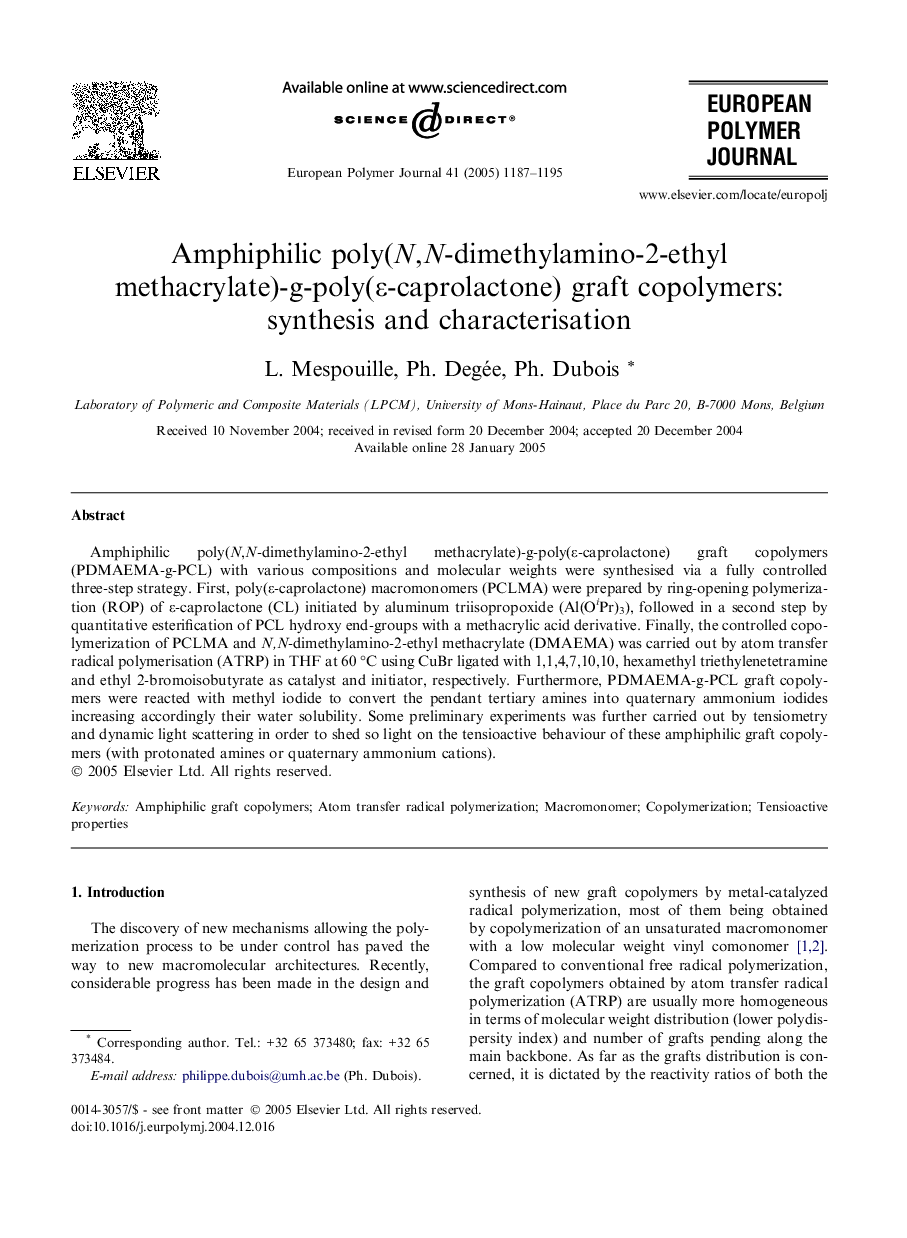| Article ID | Journal | Published Year | Pages | File Type |
|---|---|---|---|---|
| 10609277 | European Polymer Journal | 2005 | 9 Pages |
Abstract
Amphiphilic poly(N,N-dimethylamino-2-ethyl methacrylate)-g-poly(ε-caprolactone) graft copolymers (PDMAEMA-g-PCL) with various compositions and molecular weights were synthesised via a fully controlled three-step strategy. First, poly(ε-caprolactone) macromonomers (PCLMA) were prepared by ring-opening polymerization (ROP) of ε-caprolactone (CL) initiated by aluminum triisopropoxide (Al(OiPr)3), followed in a second step by quantitative esterification of PCL hydroxy end-groups with a methacrylic acid derivative. Finally, the controlled copolymerization of PCLMA and N,N-dimethylamino-2-ethyl methacrylate (DMAEMA) was carried out by atom transfer radical polymerisation (ATRP) in THF at 60 °C using CuBr ligated with 1,1,4,7,10,10, hexamethyl triethylenetetramine and ethyl 2-bromoisobutyrate as catalyst and initiator, respectively. Furthermore, PDMAEMA-g-PCL graft copolymers were reacted with methyl iodide to convert the pendant tertiary amines into quaternary ammonium iodides increasing accordingly their water solubility. Some preliminary experiments was further carried out by tensiometry and dynamic light scattering in order to shed so light on the tensioactive behaviour of these amphiphilic graft copolymers (with protonated amines or quaternary ammonium cations).
Keywords
Related Topics
Physical Sciences and Engineering
Chemistry
Organic Chemistry
Authors
L. Mespouille, Ph. Degée, Ph. Dubois,
